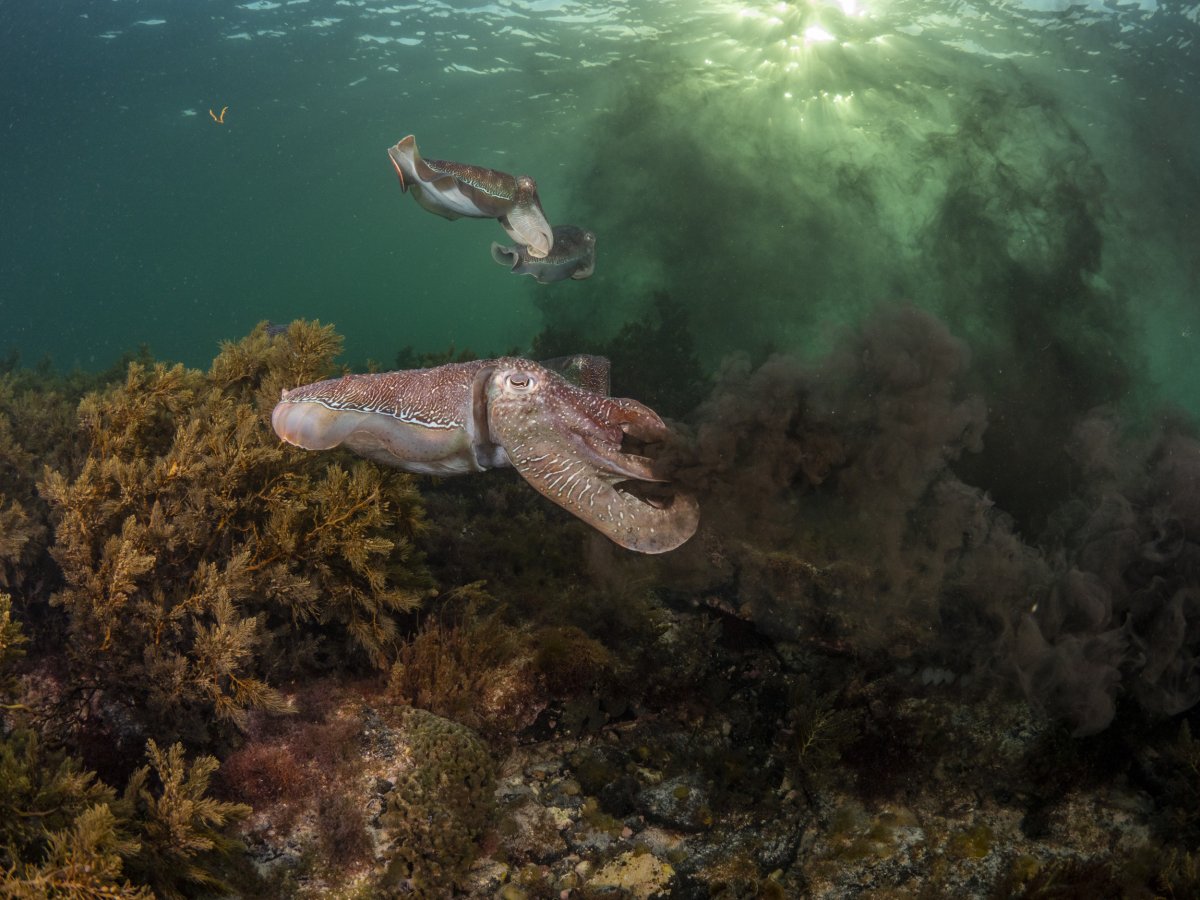When it comes to fending off sharks, it turns out you might not "need a bigger boat," as recommended in Jaws—but just a bottle of cuttlefish ink.
This is the revelation of researchers from University College Dublin (UCD), Ireland and the Florida Atlantic University, who discovered that the ink works as a "chemical repellent."
They found that the pigment melanin, which is the main component of cuttlefish ink, appears capable of overwhelming sharks' heightened sense of smell—turning one of the predators' top strengths into an Achilles' heel to help prevent attacks and other shark–human conflicts.
"By leveraging what we've discovered, it may be possible to deploy safe and targeted repellents near beaches, aquaculture signs or fishing zones, to minimize encounters between sharks and humans," UCD bioinformatician Colleen Lawless said in a statement.

The discovery comes as new data from the International Shark Attack File revealed that the U.S. once again has the highest reported number of unprovoked shark attack bites.
In total, the U.S. logged 28 incidents last year—half of which happened off of the coast of Florida. Of four fatal attacks worldwide, one happened in U.S. waters, near Oahu, Hawaii.
In their study, Lawless and her colleagues used genetic data on several shark species—including the great white—to model the three-dimensional structures of the olfactory, or smell, receptors of the iconic ocean predators.
This allowed them to show that melanin has a molecular structure that can latch onto shark's smell receptors and throw one of their vital senses, meaning they might be encouraged to avoid any water in which the chemical had been dispersed.
As sharks generally share the same core set of olfactory receptors across different species—regardless of their different habitats and lifestyles—the natural deterrent has the potential to work across the majority of shark species.
"Understanding how prey species like cuttlefish have evolved to exploit specific vulnerabilities in predators like sharks enriches not only our understanding of marine ecosystems, but provides inspiration for conservation tools rooted in natural processes," said Lawless.

At the present, the tools for deterring sharks from certain areas include things like gill nets (which feature vertical panels of netting hung from floats) and drumlines, which lure in and capture sharks via baited hooks hung from floating barrels.
These approaches are invasive, and can cause harm not only to sharks, but also other marine life including dolphins, rays, turtles and even whales.
In contrast, the use of melanin as shark repellent affords a more subtle and less harmful way of keeping sharks out of places we don't want them—not only for our benefit, but also for theirs.
"For example, synthetic analogues of cuttlefish ink compounds could be used to keep sharks away from hazardous regions, such as polluted waters of areas with heavy fishing activity, thereby improving their survival as a lot of shark species are classified as endangered," Lawless concluded.
Do you have a tip on a science story that Newsweek should be covering? Do you have a question about sharks? Let us know via science@newsweek.com.
Reference
Lawless, C., Simonitis, L. E., Finarelli, J. A., & Hughes, G. M. (2025). Decoding Deception: The binding affinity of cuttlefish ink on shark smell receptors. G3 Genes|Genomes|Genetics. https://doi.org/10.1093/g3journal/jkaf001
fairness meter
About the writer
Ian Randall is Newsweek's Deputy Science Editor, based in Royston, U.K. His focus is reporting on science and health. He ... Read more



